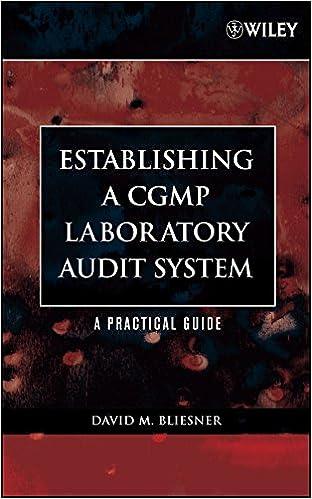



Sun Microsystems is a leading supplier of computer-related products, including servers, workstations, storage devices, and network switches. In 2009, Sun Microsystems was acquired by Oracle Corporation. In the letter to stockholders as part of the 2001 annual report, President and CEO Scott G. McNealy offered the following remarks: Fiscal 2001 was clearly a mixed bag for Sun, the industry, and the economy as a whole. Still, we finished with revenue growth of 16 percent-and that's significant. We believe it's a good indication that Sun continued to pull away from the pack and gain market share. For that, we owe a debt of gratitude to our employees worldwide, who aggressively brought costs down -even as they continued to bring exciting new products to market. The statement would not appear to be telling you enough. For example, McNealy says the year was a mixed bag with revenue growth of 16 percent. But what about earnings? You can delve further by examining the income statement in Exhibit 4. Also, for additional analysis of other factors, consolidated balance sheet(s) are presented in Exhibit 5. Exhibit 1 2001 Dollars 2000 Dollars 1999 Dollars $ 15,718 $ 11,842 1998 Dollars $ 9,839 $ 18,625 $ 10,035 2,017 $ 7,544 1,636 $ 5,677 1,276 $ 3,923 1,023 4,545 4,068 3,204 2,819 264 66 18 0.6 80 15 1170 175 $ 16,941 $ 13,329 $ 10,292 $ 7,940.6 Net revenues Costs and expenses: Cost of sales Research and development Selling, general and administrative Goodwill amortization In-process research and development Total costs and expenses Operating Income Gain (loss) on strategic investments Interest income, net Litigation settlement Income before taxes Provision for income taxes Cumulative effect of change in accounting principle, net Net income $1,550 $ 1,898.4 $ 1,684 $-91 $ 2,389 $ 2021 $ 359 $ 167 $ 88 $ 48 $ 1,952 $ 1,081.17| $ 2,758 $ 1,638 $ 1,946.4 $ 965.01 $ 621.82 1,181.52 $-551 $ 925.83 $ 1,792.99 $ $ 764.88 1,016.181 $ 0.31 $ 0.24 $ 0.27 $ 0.53 Net income per common share- diluted Shares used in the calculation of net income per common share-diluted 3,429 3,383 3,278 3,187 Exhibit 2 2001 2000 $ 1,476| 386 2,952 $ 1,848 623 2,685 Assets Current assets: Cash and cash equivalents Short-term investments Accounts receivable, net allowances of $410 in 2001 and $534 in 2000 Inventories Deferred tax assets Prepaids and other current assets Total current assets Property, plant and equipment, net Long-term investments Goodwill, net of accumulated amortization of $349 in 2001 and $88 in 2000 Other assets, net 1,050 1,059 968) 7,891 2,693 4,675 2,0431 551 675 479 6,861 2,096 4,492 164 835 18,137 522 14,135 L 1,052 485 1,376 1,825 310 921 5,1441 744 1,7151 7,603 925 750 1,155 1,289 212 204 4,541 582 1,726 6,849 Liabilities and Stockholders' Equity Current liabilities: Short-term borrowings Accounts payable Accrued payroll-related liabilities Accrued liabilities and other Deferred revenues and customer deposits Warranty reserve Income taxes payable Total current liabilities Deferred income taxes Long-term debt and other obligations Total debt Commitments and contingencies Stockholders' equity: Preferred stock, $0.001 par value, 10 shares Jauthorized (1 sahre which has been designated as Series A Preferred participating stock): no shares issued and outstanding Common stock and additional paid-in-capital, $0.00067| par value, 7,200 shares authorized; issued: 3,536 shares in 2001 and 301 shares in 2000 Treasury stock, at cost: 288 shares in 2001 and 301 shares in 2000 Deferred equity compensation Retained earnings Accumulated other comprehensive income (loss) Total stockholders' equity 6,2381 2,726 -2,436 - 1,434 -12 5,934 -72 6,8331 -29 10,5341 18,1371 7,286 14,135 Part A Referring to Exhibit 1, compute the annual percentage change in net income per common share-diluted (second numerical line from the bottom) for 19981999, 1999-2000 and 2000-2001 Rate of change, 1998 to 1999: Rate of change, 1999 to 2000: Rate of change, 2000 to 2001: Part B Also in Exhibit 1, compute net incomeet revenue (sales) for each of the four years. Begin with 1998. 1998 Profit Margin: 1999 Profit Margin: 2000 Profit Margin: 2001 Profit Margin: Part C Compute return on stockholders' equity for 2000 and 2001 using data from Exhibits 1 and 2. 2000 Return on Stockholders' Equity: 2001 Retum on Stockholders' Equity: Part D Analyze your results to Question 2 (Part B above) more completely by computing ratios 1, 2a, 2b, and 3b (these numbers correspond with the numbered ratios listing in Chapter 3 of our textbook) for 2000 and 2001. Actually, the answer to ratio 1 can be found as part of the answer to question 2 (Part B), but it is helpful to look at it again. Ratio 2000 2001 2b Part E The average stock prices for each of the four years shown in Exhibit 1 were as follows: 1998 1999 2000 2001 1114 16%4 28% 9x Compute the priceleamings (P/E) ratio for each year. That is, take the stock price shown above and divide by net income per common stock-dilution from Exhibit 1, 1998 P/E Ratio: 1999 P/E Ratio: 2000 P/E Ratio: 2001 P/E Ratio










